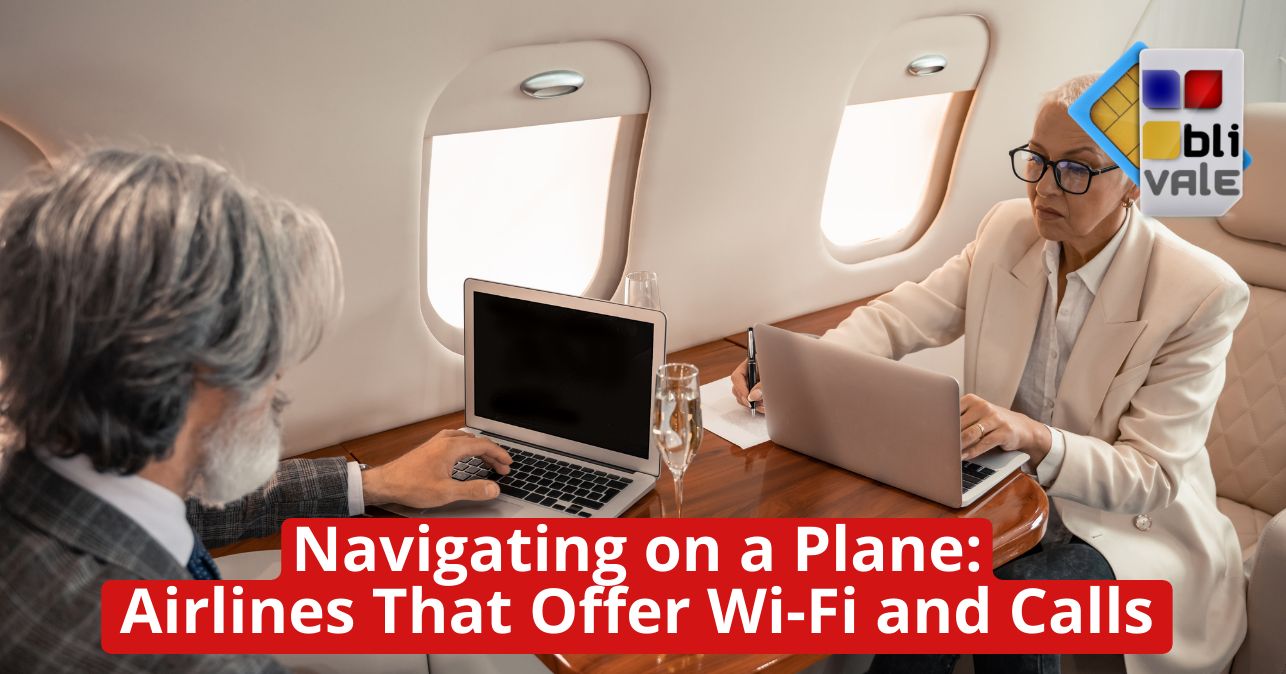In recent years, in-flight internet use has become increasingly common. Travelers around the world want to stay connected, whether for work or entertainment. But which airlines offer this service? And what costs are associated with it? In this article, we explore the airlines that provide in-flight Wi-Fi, their policies, costs, and the options available for making calls.
Free Wi-Fi: The Excellence of the Sector
Some airlines have decided to offer free Wi-Fi to their passengers. This can be a great opportunity for those who travel frequently and want to stay connected without additional costs.
Singapore Airlines
Singapore Airlines is one of the most well-known airlines for the quality of its services. They offer free and unlimited Wi-Fi to KrisFlyer loyalty program members. To benefit from this service, it is advisable to register for the program before the flight, in order to ensure uninterrupted access.
Delta Air Lines
Delta Air Lines also stands out in the industry with its free Wi-Fi for SkyMiles members. Like Singapore Airlines, pre-flight registration is recommended to ensure quick and easy access to the service.
JetBlue Airways
JetBlue Airways offers free Wi-Fi to all passengers. However, they are required to display a short advertisement when logging in. This is a great way to ensure everyone can stay connected without paying a fee.
If you are thinking of taking a trip alone or with friends or for work, do not forget the importance of staying connected wherever you are. For unlimited Internet connection, contact BLIVALE where you can get unlimited Internet according to the destinations:
For unlimited plans like data BLIVALE guarantees free roaming anywhere in the world, no additional or hidden costs. Don't let the lack of connection stop you; get ready to explore the world with freedom and spontaneity.
Paid Wi-Fi: Options and Costs
Not all airlines offer free Wi-Fi. Some have variable payment models based on flight length or data usage.
Lufthansa
Lufthansa offers several paid Wi-Fi packages on short- and medium-haul flights operated by Airbus A320 aircraft. Recently, they also introduced the possibility of sending and receiving messages for free on selected flights, after registering for the Miles & More program.
British Airways
British Airways offers two distinct packages: Browse and Stream. Prices range from £8 to £24, depending on the length of the flight. This service is available on medium- and long-haul flights and on some short-haul flights operated by Airbus A320 Neo.
Aeroflot
Aeroflot offers several pricing plans, the cheapest of which starts at $5 for 10 MB and goes up to $50 for 150 MB. The service is available on Airbus A330 and Boeing 777.
ITA Airways
ITA Airways offers packages ranging from 10 MB to 200 MB, with prices ranging from €1.90 to €19. This flexibility allows passengers to choose the plan that best suits their needs.
Considerations for Voice Calls on Airplanes
Although onboard Wi-Fi allows the use of messaging applications such as WhatsApp or Skype, making voice or video calls during the flight is generally limited or discouraged. This is due to both technical reasons and the need to ensure the comfort of other passengers.
Some airlines may allow Wi-Fi calling services, but it is always a good idea to check the airline’s specific policies before flying. The truth is that while you are in the air, your comfort as a group should be a priority.
The Costs of In-Flight Connectivity
Cost is a key issue when it comes to in-flight connectivity. Using the airline’s internet connection can be expensive compared to traditional mobile plans. But why?
Expensive Technology
Airlines install satellite systems or special antennas on aircraft to provide connectivity. These systems entail high operating costs, which are passed on to passengers through specific fees for using the internet on board.
Technical Limitations
The available bandwidth is shared among all passengers, which means that airlines must limit connection usage or charge higher rates to ensure acceptable quality of service.
Exclusive Offer
Unlike terrestrial networks where users can choose between different data plan options, on airplanes passengers are "captured" by the company's system without the possibility of opting for an alternative plan.
Who Benefits Most from Airplane Connection?
Internet connection on airplanes can be advantageous for different categories of people. Here are some of them:
Professionals and Entrepreneurs
These travelers often need to stay operational during the flight. Responding to urgent emails or participating in video conferences can make the difference between a productive trip and a wasted one.
Frequent Travelers
Regular travelers can benefit from staying up to date with flight information, while managing connections and bookings without stress.
Journalists and Content Creators
These professionals are often called upon to produce content in real time or follow live events. Staying connected during the flight can be crucial to meeting editorial deadlines.
Students and Researchers
For students, having access to online resources during a flight can transform travel time into learning opportunities.
Tourists on Long Trips
Tourists will also appreciate being able to plan their itinerary or consult maps while in flight.
What Happens If You Use Your Local or International Connection?
If a passenger attempts to use their mobile connection during a flight, there are some technical considerations to keep in mind.
Signal Missing at High Altitude
Once the cruising altitude is reached, the signal from the ground cell towers no longer reaches the device. This means that the phones are left "without service".
Emergency Mode
During takeoff or landing, there may be a brief lock on to a cell tower, but only at low altitude and with an unstable signal.
Limited Satellite Connectivity
Although satellite networks exist, regular local data plans do not support such a connection. Only specialized devices can use these networks, usually at a high cost.
Potential Interferences
Although modern aircraft are designed to resist electromagnetic interference from mobile devices, active use of cellular networks could compromise the security of the aircraft's communication systems.
Alternatives to Traditional Mobile Connection
There are good alternatives for those who want to stay connected during flights:
Company Wi-Fi: Companies offer connectivity through dedicated systems.
Offline Messaging Apps: Some apps allow you to sync once you reconnect.
International SIM or eSIM: Can be used before and after the flight but not during.
Conclusion: A Connected World Even in Flight
In-flight connectivity has revolutionized the way we travel, offering unique opportunities to stay productive or simply entertained. However, it is essential to consider the costs and limitations associated with the service. Before booking a flight, be sure to check the airline’s specific policies regarding Wi-Fi and calls. This way, you will be ready to face every journey with a connection that suits your needs.
If you've ever flown and want to stay connected, now you have all the information you need to make an informed choice about your favorite airline. Start planning your next trip!









